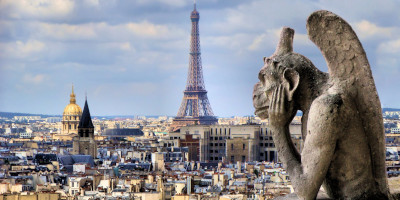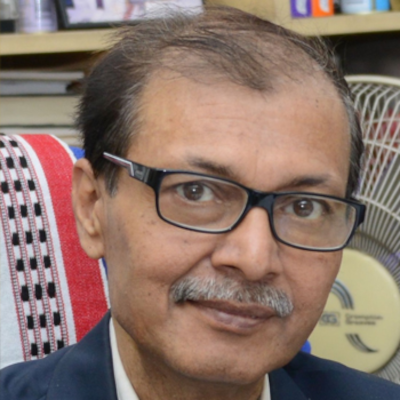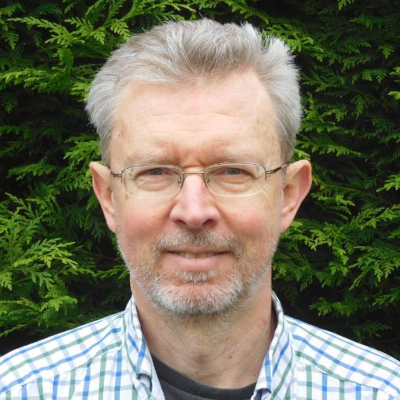|
|
|
Keynote speakersICPRAI 2022 is proud to announce the following Keynote speakers: Prof. Bidyut Baran Chaudhuri
Brief BioProf. Bidyut Baran Chaudhuri (LF’15) received the B.Tech. and M.Tech. degrees from Calcutta University, Kolkata, India, in 1972 and 1974, respectively, and the Ph.D. degree from the Indian Institute of Technology Kanpur, Kanpur, India, in 1980. He retired as the Head of the Computer Vision and Pattern Recognition Unit, Indian Statistical Institute, Kolkata, in December 2015, where he was an INAE Distinguished Professor and a J. C. Bose Fellow until December 2018. He is currently the Pro Vice-Chancellor (Academics) with Techno India University, Kolkata. From 1981 to 1982, he was a Post-Doctoral Fellow with Queen’s University Belfast, Belfast, U.K., as a Leverhulme Overseas Fellow. He was also a Visiting Faculty with the University of Hanover, Hanover, Germany, from 1987 to 1988 as well as a GSF (currently, Leibnitz Institute) in 1985, 1990, and 1992. In 1978, he joined the Indian Statistical Institute as a Regular Faculty Member. During his tenure, he acted as a UNDP KBCS Project Coordinator from 1992 to 1994, a Jawaharlal Nehru fellow from 2002 to 2004, and did held several other honorable positions. He has published 425 research papers and 6 technical books. His current research interests include pattern recognition, image processing, computer vision, speech language processing, OCR, and machine learning. Prof. Chaudhuri is an Associate Editor of the International Journal of Document Analysis and Recognition and the International Journal of Pattern Recognition and Artificial Intelligence. He served as an Associate Editor of Pattern Recognition and Pattern Recognition Letters. He is a fellow of the International Association for Pattern Recognition, Third World Academy of Science, Indian National Science Academy, National Academy of Science, Indian National Academy of Engineering, West Bengal Academy of Science and Technology, and Optical Society of India. Prof. Chaudhuri is a Life Fellow of IEEE, world's biggest Engineering Society/Institute. Prof. Robert (Bob) Fisher Brief BioProf. Robert B. Fisher FIAPR, FBMVA received a BS (Mathematics, California Institute of Technology, 1974), MS (Computer Science, Stanford, 1978) and a PhD (Edinburgh, 1987). Since then, Bob has been an academic at Edinburgh University, including being College Dean of Research. He has been the Education Committee and Industrial Liaison Committee chair for the Int. Association for Pattern Recognition, of which he is currently the association Treasurer. His research covers topics mainly in high level computer vision and 3D and 3D video analysis, focussing on reconstructing geometric models from existing examples, which contributed to a spin-off company, Dimensional Imaging. The research has led to 5 authored books and 300 peer-reviewed scientific articles or book chapters. He has developed several on-line computer vision resources, with over 1 million hits. Most recently, he has been the coordinator of EC projects 1) acquiring and analysing video data of 1.4 billion fish from over about 20 camera-years of undersea video of tropical coral reefs and 2) developing a gardening robot (hedge-trimming and rose pruning). He is a Fellow of the Int. Association for Pattern Recognition (2008) and the British Machine Vision Association (2010). Prof. Walter Kropatsch
Brief BioFrom 1990-2021 Walter G. Kropatsch was full professor at TU Wien. He received his diploma degree in Technical Mathematics from the Technical University in Graz. He then moved to Grenoble, France to get the Maître d'Informatique from the University of Grenoble. His PhD in 1982 was on the "Registration of Satellite Images with Maps". In 1984 he was invited by Prof. Azriel Rosenfeld to spend a year at the Center for Automation Research of the University of Maryland. The creation of the first group in Austria dealing with pattern recognition and image processing in 1990 was jointly coordinated with the Austrian Association of Pattern Recognition (AAPR), that he initiated and led from 1984 until 1995. Under his leadership the AAPR became a member of the International Association of Pattern Recognition (IAPR) in which he held several leading positions, 2004-2006 he was its president. In 1996 he organized the main conference of the IAPR, the International Conference of Pattern Recognition in Wien, Austria. His scientific research focuses on pyramidal representations of images since his collaboration with Azriel Rosenfeld in 1984/85. The current graph-based pyramids follow similar concepts with the advantage that graphs are much more flexible data structures than the regular grids as currently used as architectures in deep learning. In his more than 400 scientific contributions many other concepts and applications have been addressed. He is currently senior editor of the journal of Electronic Imaging, and associate editor the journal of the Visual Computer and of several special issues in Pattern Recognition and Pattern Recognition Letters. |





